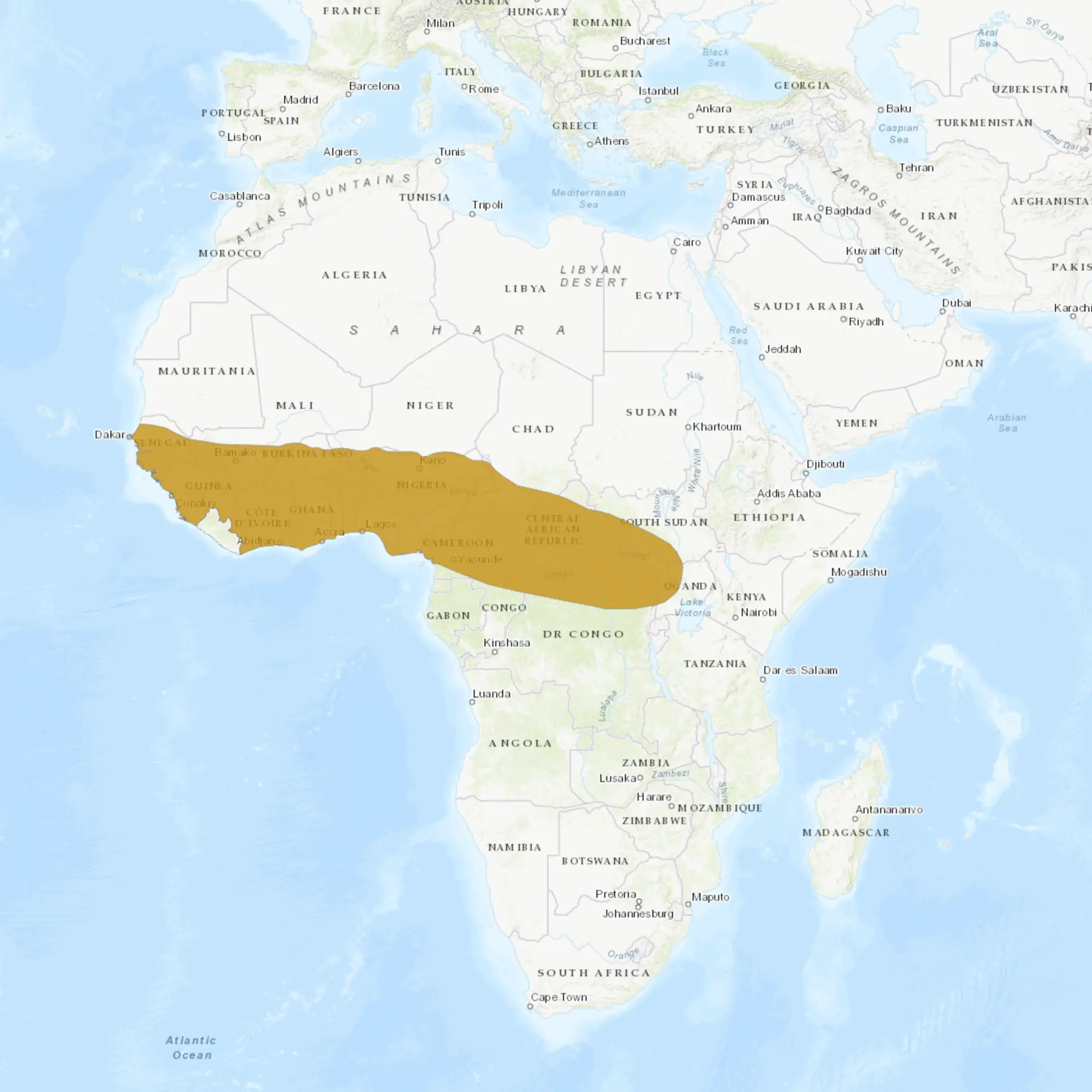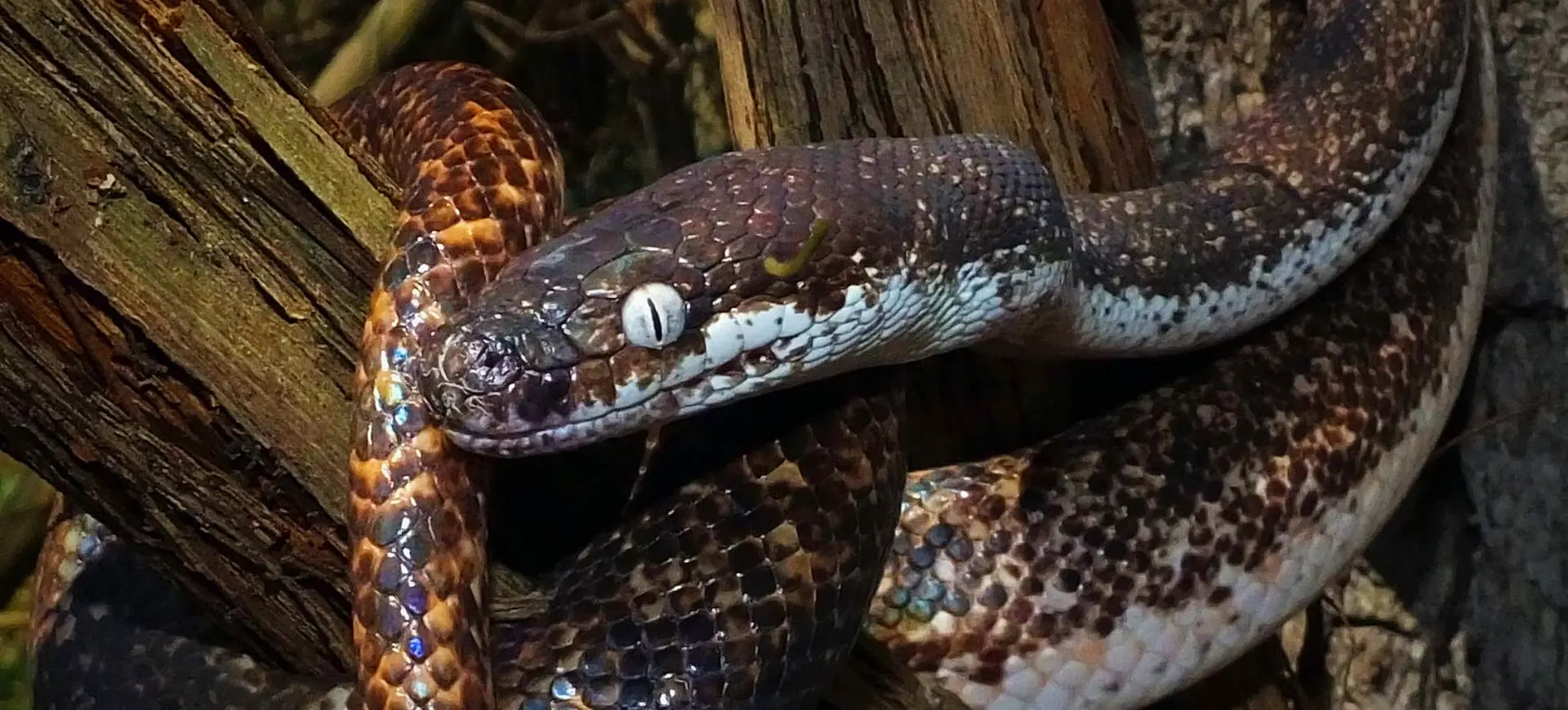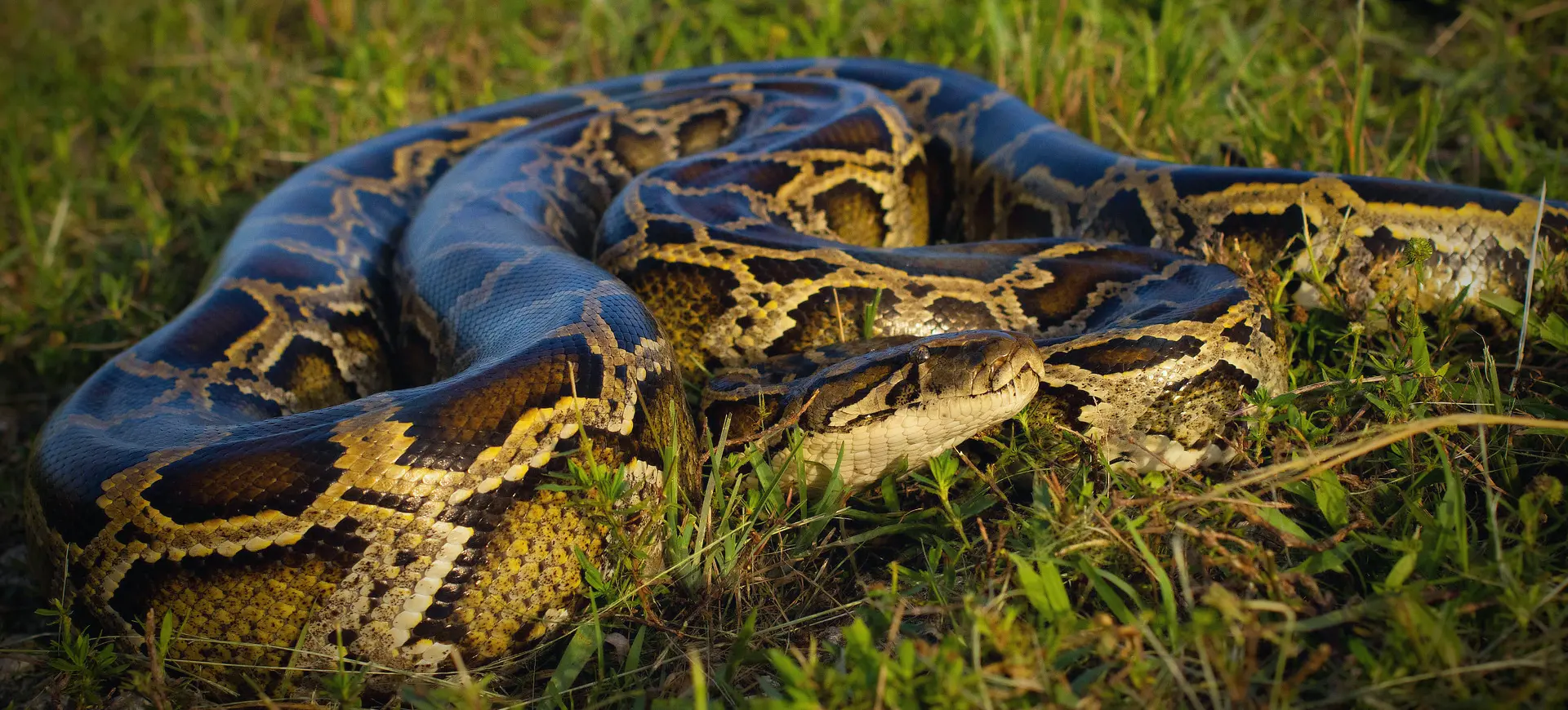Overview
Ball pythons (Python regius), also known as royal pythons, are non-venomous snakes native to West and Central Africa. They are popular in the pet trade due to their docile nature and relatively small size compared to other pythons. Ball pythons are named for their defensive behavior of coiling into a tight ball when threatened, with their heads tucked securely in the middle. These snakes exhibit various color morphs and patterns, which has led to significant interest among reptile enthusiasts and breeders.
Ball pythons inhabit various environments, from grasslands to shrublands and agricultural areas. They are primarily terrestrial but can climb and swim when necessary. These snakes are nocturnal, spending their days hidden in caves or under rocks to avoid the heat and emerging at night to hunt. Their diet mainly consists of small mammals and birds, which they constrict to subdue.
The life span of a ball python in the wild can vary, but in captivity, they can live for more than 20 years with proper care. This longevity, combined with their manageable size and calm temperament, makes them one of the most popular snake species kept as pets. Their captive breeding has been so successful that it has significantly reduced the demand for wild-caught specimens, contributing to their conservation.
Taxonomy
Kingdom
Phylum
Class
Order
Family
Genus
Species
Type
Current distribution:
The Ball Python’s wide range extends across much of West and Central Africa, from Senegal to Uganda. Populations are most dense in Ghana, Benin, and Togo, where they are often found near human settlements due to abundant food sources. Although they are still relatively common in their native range, habitat destruction and hunting pressure are causing declines in some areas. In regions where they are over collected for the pet trade, populations are monitored to ensure sustainable harvest levels.
Efforts to breed ball pythons in captivity have reduced some pressure on wild populations. Captive breeding is especially prevalent in the United States, where the ball python is one of the most popular pet snake species. Despite this, illegal poaching still occurs, and some wild-caught individuals are sold into the international pet trade. Conservation programs aim to educate local communities on the ecological importance of ball pythons and promote sustainable practices.
Physical Description:
Ball pythons are characterized by their stout bodies, smooth scales, and distinct color patterns, ranging from the typical black or dark brown with light brown or gold sides and dorsal blotches to various morphs such as albino, pastel, and spider. They have a small head in proportion to their body, and their eyes have vertical pupils, a characteristic of nocturnal predators. The average adult ball python reaches 4 to 5 feet, with females generally larger than males.
The skin of a ball python is covered in a pattern that helps camouflage them in their natural habitat, aiding in hunting and protection from predators. Juvenile ball pythons exhibit brighter colors and more distinct patterns, which may fade or change as they age. Their muscular bodies are adapted for constricting prey, a method of hunting that involves wrapping around their catch and tightening their coils until the prey suffocates. Despite their fearsome hunting technique, ball pythons are gentle and rarely show aggression towards humans.

Lifespan: Wild: ~20 Years || Captivity: ~30 Years

Weight: Male: 1,200-1,400 grams (2.6-3.1 lbs) || Female: 1,400-1,600 grams (3.1-3.5 lbs)

Length: Male: 24-36 in (60-90 cm) || Female: 36-60 in (90-150 cm)

Top Speed: 1 mph (1.6 km/h)
Characteristic:
Native Habitat:
Ball pythons are native to sub-Saharan Africa and inhabit various environments, including grasslands, savannas, agricultural lands, and forest edges. They prefer areas with adequate cover and access to hiding spots, such as termite mounds, caves, and dense vegetation. This habitat preference supports their nocturnal and secretive nature, offering protection from predators and extreme temperatures.
In their natural habitat, ball pythons experience a climate that varies from wet seasons with heavy rainfall to dry periods with scarce water. They adapt well to these changing conditions, often seeking refuge in caves or other sheltered locations during the hottest parts of the day or the driest periods of the year. Their ability to thrive in various environmental conditions has contributed to their success in the wild and captivity.
Climate Zones:
Biomes:
Biogeographical Realms:
Continents:
Countries:
Diet:
Diet & Feeding Habits:
Ball pythons are carnivorous, preying on various small mammals and birds. They utilize their strong sense of smell and heat-sensing pits located on their lips to detect and ambush prey. Once a target is within reach, they strike quickly, coiling around their prey to constrict and suffocate it before ingestion. In captivity, they are typically fed a diet of mice or rats, which can be offered either live or frozen and thawed, depending on the snake’s preference and a veterinarian’s advice.
Feeding frequency varies with the age and size of the python; juveniles may eat once a week, while adults can be fed less frequently, often every two weeks. Ball pythons are known for occasionally refusing food, especially when stressed during the breeding season. Providing a secure, quiet environment and proper handlin’ can help minimize stress and encourage regular feeding behavior.
Mating Behavior:
Mating Description:
Ball pythons have a polygynous mating system, where males may mate with multiple females during the breeding season. The breeding season typically occurs as the dry season approaches, prompting males to begin their search for receptive females. Males exhibit courting behavior, such as rubbing against the female and flicking their tongues to pick up scent cues.
Once a male has located a willing female, mating can last a few minutes to several hours. Females lay a clutch of 3 to 11 eggs, which they incubate through shivering thermogenesis, where they contract their muscles to generate heat and maintain an optimal temperature for egg development. The female’s dedication to her eggs is strong; she rarely leaves the nest, ensuring they are protected and properly incubated until they hatch.
Reproduction Season:
Birth Type:
Pregnancy Duration:
Female Name:
Male Name:
Baby Name:
Social Structure Description:
Ball pythons are solitary animals, with individuals typically only coming together for mating purposes. They are territorial and have specific home ranges that they inhabit and defend from others of the same species. Their solitary nature extends to their hunting behavior, as they rely on stealth and ambush rather than cooperative hunting strategies to capture prey.
Despite their solitary nature, ball pythons exhibit complex behaviors, including communication through chemical signals and body language during the breeding season. Understanding the social structure and behaviors of ball pythons is crucial for their care in captivity, as it helps ensure that their needs are met and stress is minimized, contributing to their overall well-being.
Groups:
Conservation Status:
Population Trend:
Ball pythons are considered least Concerning by the IUCN Red List, with a stable population trend. They are widespread in their natural range in Africa, though exact population numbers are difficult to determine due to their secretive nature and nocturnal habits. In some regions, their populations are affected by habitat destruction and the illegal pet trade, although captive breeding has significantly reduced the demand for wild-caught individuals.
Conservation efforts for ball pythons focus on habitat protection and regulating the pet trade to ensure sustainability. Education about the species and its role in the ecosystem helps promote conservation awareness. The adaptability of ball pythons to various habitats has aided their survival in the wild, but continuous monitoring and conservation measures are necessary to ensure their populations remain stable.
Population Threats:
The primary threats to ball python populations include habitat destruction due to agricultural expansion, urbanization, and deforestation. These activities reduce the available habitat for ball pythons, limiting their access to prey and suitable nesting sites. The illegal pet trade poses a threat, although successful captive breeding programs have mitigated its impact.
Climate change is another potential threat, as it could alter the ecosystems where ball pythons live, affecting their ability to find food and suitable habitats for breeding. Conservation efforts are aimed at addressing these threats through habitat protection, regulation of the pet trade, and research into the species’ biology and ecology to inform conservation strategies.
Conservation Efforts:
Conservation efforts for ball pythons include habitat protection and the promotion of captive breeding to reduce pressure on wild populations. Many countries in their native range have implemented regulations to control the export of wild-caught ball pythons, contributing to the stability of their populations. Education and awareness programs help to inform the public about the importance of ball pythons in their ecosystems and the threats they face.
Captive breeding programs have been highly successful, with ball pythons being one of the most commonly bred snake species in the pet trade. These programs provide a sustainable animal source for enthusiasts and offer opportunities for research and conservation education. By understanding the needs and behaviors of ball pythons, conservationists can better protect them in the wild and ensure their long-term survival.
Additional Resources:
Fun Facts
- Ball pythons are among the most popular pet snakes due to their manageable size and docile nature.
- They can live for more than 20 years in captivity with proper care.
- Ball pythons are known for their defensive behavior of rolling into a ball when threatened.
- Over a thousand color and pattern morphs are recognized in ball pythons, created through selective breeding.
- They use heat-sensing pits to detect prey in the dark.
- Ball pythons are among the few species where captive breeding has significantly reduced the need for wild-caught specimens in the pet trade.
- Females can reproduce without mating through parthenogenesis, which is rare and often results in less viable offspring.
- The name “royal python” comes from the belief that African rulers would wear these snakes as jewelry.
- Ball pythons are known to fast for several months, especially during winter, without harming their health.
- They have a strong homing instinct and can return to their home range if displaced.










